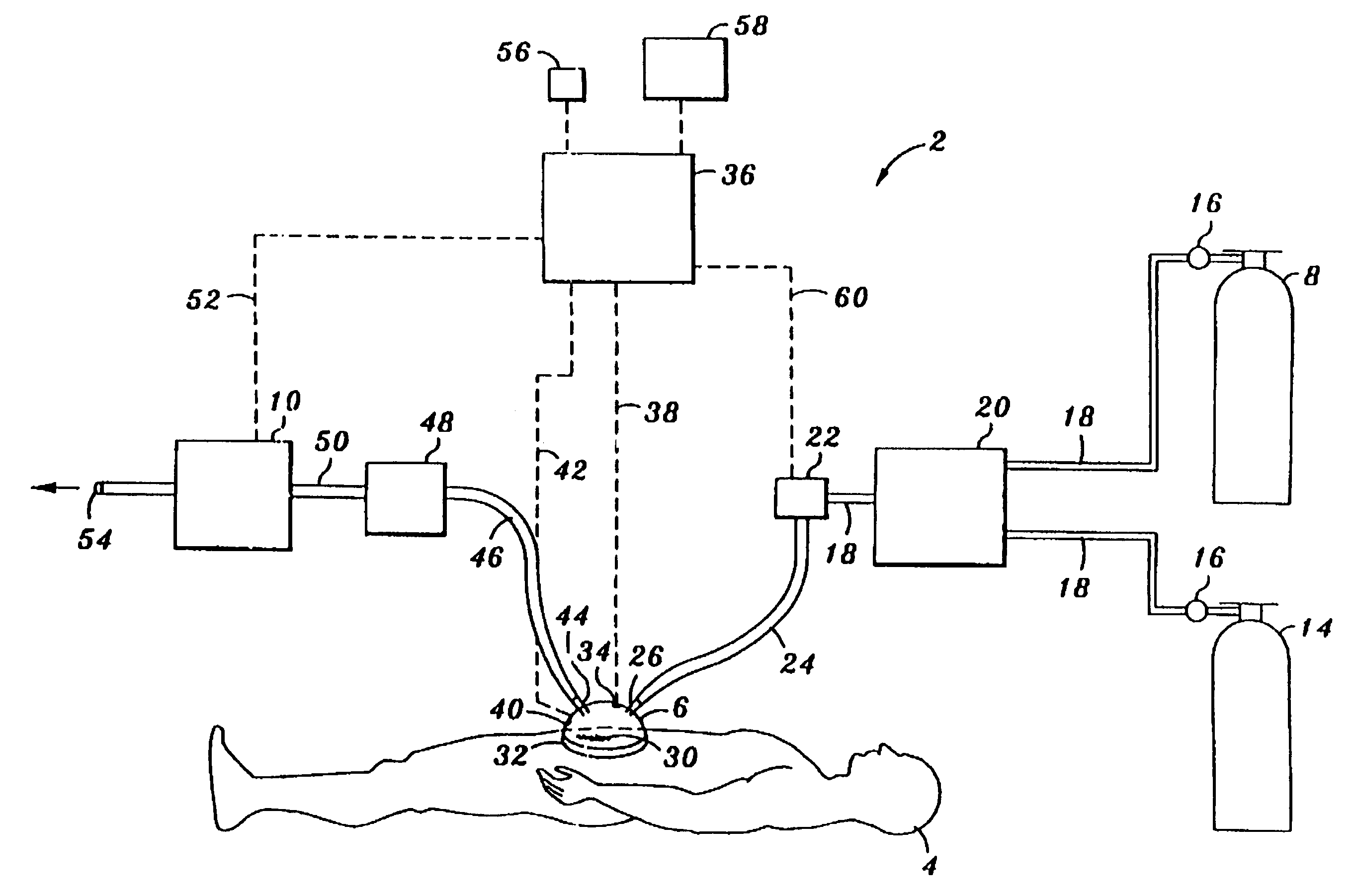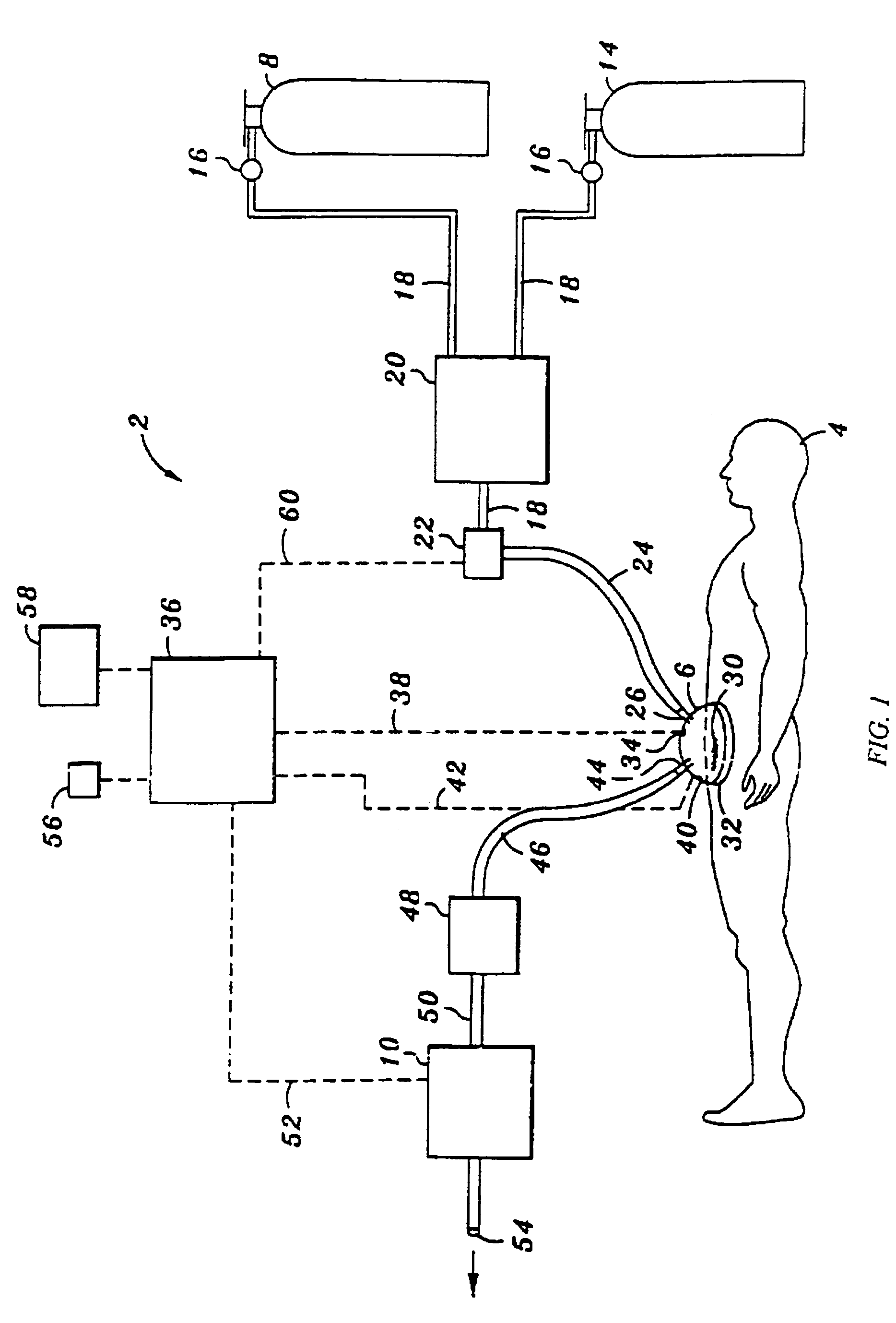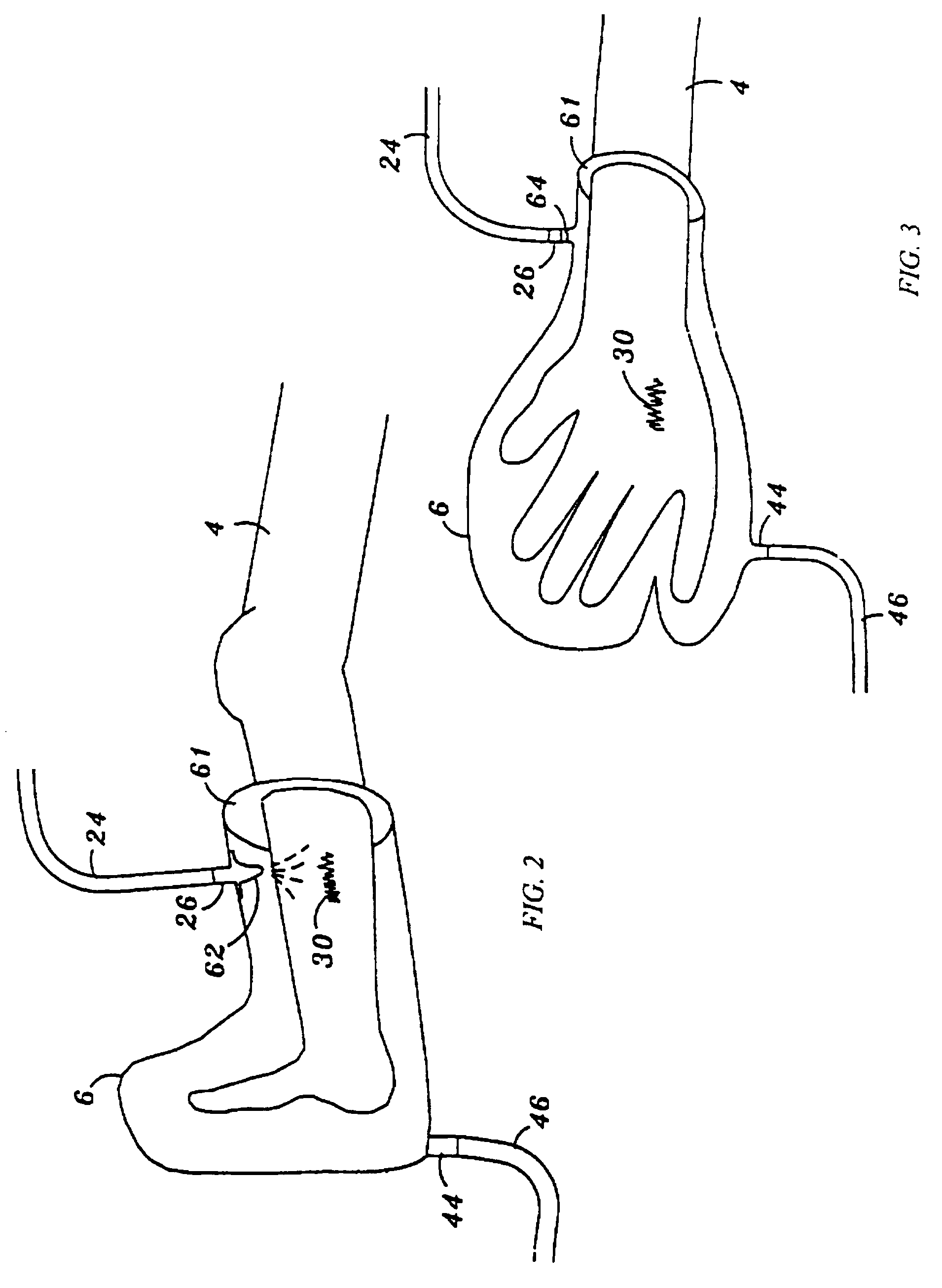Device and method for treatment of wounds with nitric oxide
a technology of nitric oxide and wounds, applied in the field of wounds and infections, can solve the problems of increasing the resistance of infective agents such as bacteria to conventional antibiotic therapy, increasing the number of resistant strains of bacteria, and extremely expensive agents, so as to promote the healing process
- Summary
- Abstract
- Description
- Claims
- Application Information
AI Technical Summary
Benefits of technology
Problems solved by technology
Method used
Image
Examples
Embodiment Construction
[0057]Referring now to FIG. 1, a NO delivery device 2 is shown connected to a patient 4. In its most general sense, the NO delivery device 2 includes a bathing unit 6 that is fluidically connected to a NO gas source 8, a flow control valve 22, and a vacuum unit 10. FIG. 1 illustrates one preferred embodiment of the invention.
[0058]In FIG. 1, the NO gas source 8 is a pressurized cylinder containing NO gas. While the use of a pressurized cylinder is the preferred method of storing the NO-containing gas source 8, other storage and delivery means, such as a dedicated feed line (wall supply) can also be used. Typically, the NO gas source 8 is a mixture of N2 and NO. While N2 is typically used to dilute the concentration of NO within the pressurized cylinder, any inert gas can also be used. When the NO gas source 8 is stored in a pressurized cylinder, it is preferable that the concentration of NO in the pressurized cylinder fall within the range of about 800 ppm to about 2500 ppm. Commerc...
PUM
| Property | Measurement | Unit |
|---|---|---|
| time | aaaaa | aaaaa |
| exposure time | aaaaa | aaaaa |
| time | aaaaa | aaaaa |
Abstract
Description
Claims
Application Information
 Login to View More
Login to View More - R&D
- Intellectual Property
- Life Sciences
- Materials
- Tech Scout
- Unparalleled Data Quality
- Higher Quality Content
- 60% Fewer Hallucinations
Browse by: Latest US Patents, China's latest patents, Technical Efficacy Thesaurus, Application Domain, Technology Topic, Popular Technical Reports.
© 2025 PatSnap. All rights reserved.Legal|Privacy policy|Modern Slavery Act Transparency Statement|Sitemap|About US| Contact US: help@patsnap.com



